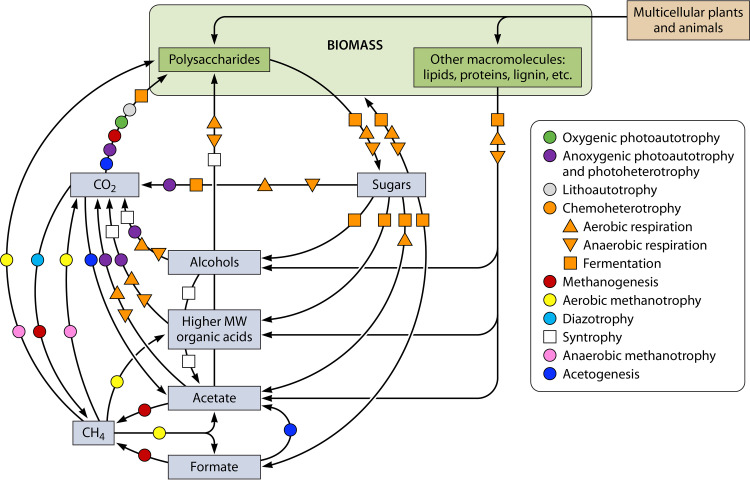FIG 3.
Cross-feeding of carbon waste metabolites creates a global carbon cycle. The indicated trophic categories only refer to possible effects on carbon transformation. For example, chemoheterotrophs are primarily responsible for the conversion of macromolecules from both microbes and multicellular organisms into diverse organic compounds that can serve as nutrients for other lifestyles but might also participate in the cycling of other elements. Acetogenesis arrows involve the excretion of acetate from the conversion of two CO2 to acetyl-CoA via energy-conserving Wood-Ljungdahl pathway activity, rather than referring to every lifestyle possible for a bacterium classified as an acetogen (247). Syntrophy arrows are for fermentative carbon transformations that require consumption by a partner to be thermodynamically feasible (31, 57, 58). The diazotrophy arrow represents one of the carbon transformations known to be carried out by nitrogenase in sufficient quantity to support the growth of a partner (236). In some cases, only certain organisms within a category might generate a given molecule. The figure does not necessarily capture every possible activity within a given lifestyle. The figure also does not include every carbon transformation known to be carried out by microbes.

